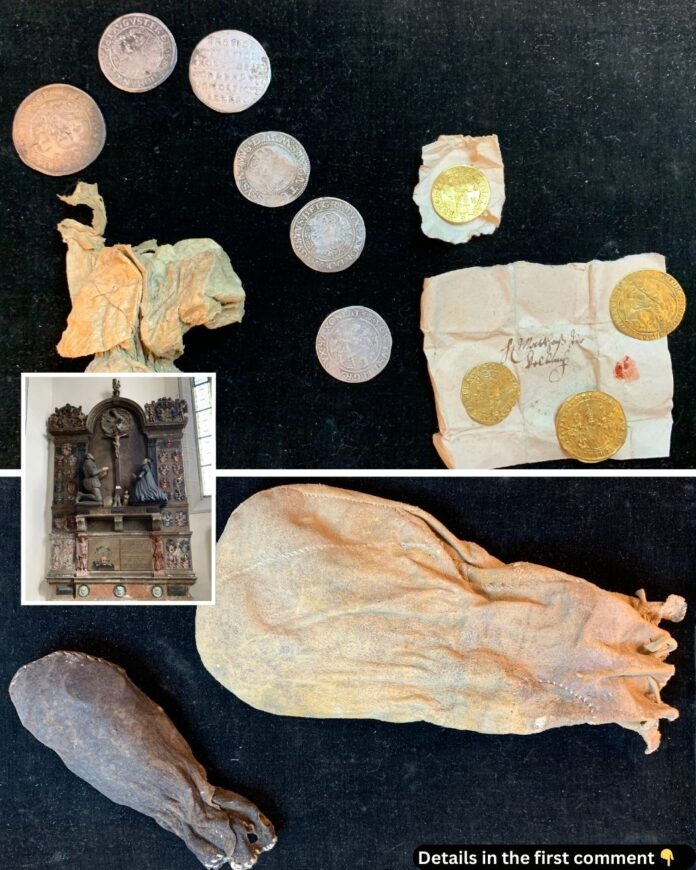In the quiet town of Eisleben, Germany, a centuries-old secret lay hidden within the leg of a sandstone statue at St. Andrew’s Church. What began as routine restoration work in 2022 turned into a momentous discovery—four leather bags containing 816 coins, untouched since the chaos of the Thirty Years’ War. This remarkable find not only unveils the hardships of 17th-century Europe but also ties together the rich history of a church forever linked to Martin Luther and the Protestant Reformation.
The Significance of St. Andrew’s Church
Located in the heart of Eisleben, the birthplace of Martin Luther, St. Andrew’s Church has stood as a beacon of faith and resilience since its construction in the 12th century. By the late 15th century, the church underwent a major Gothic-style reconstruction, resulting in the three-aisled nave and towering structure that exists today. This sacred site witnessed Martin Luther’s final sermons in 1546, making it a pilgrimage destination for those honoring the legacy of the Protestant Reformer.
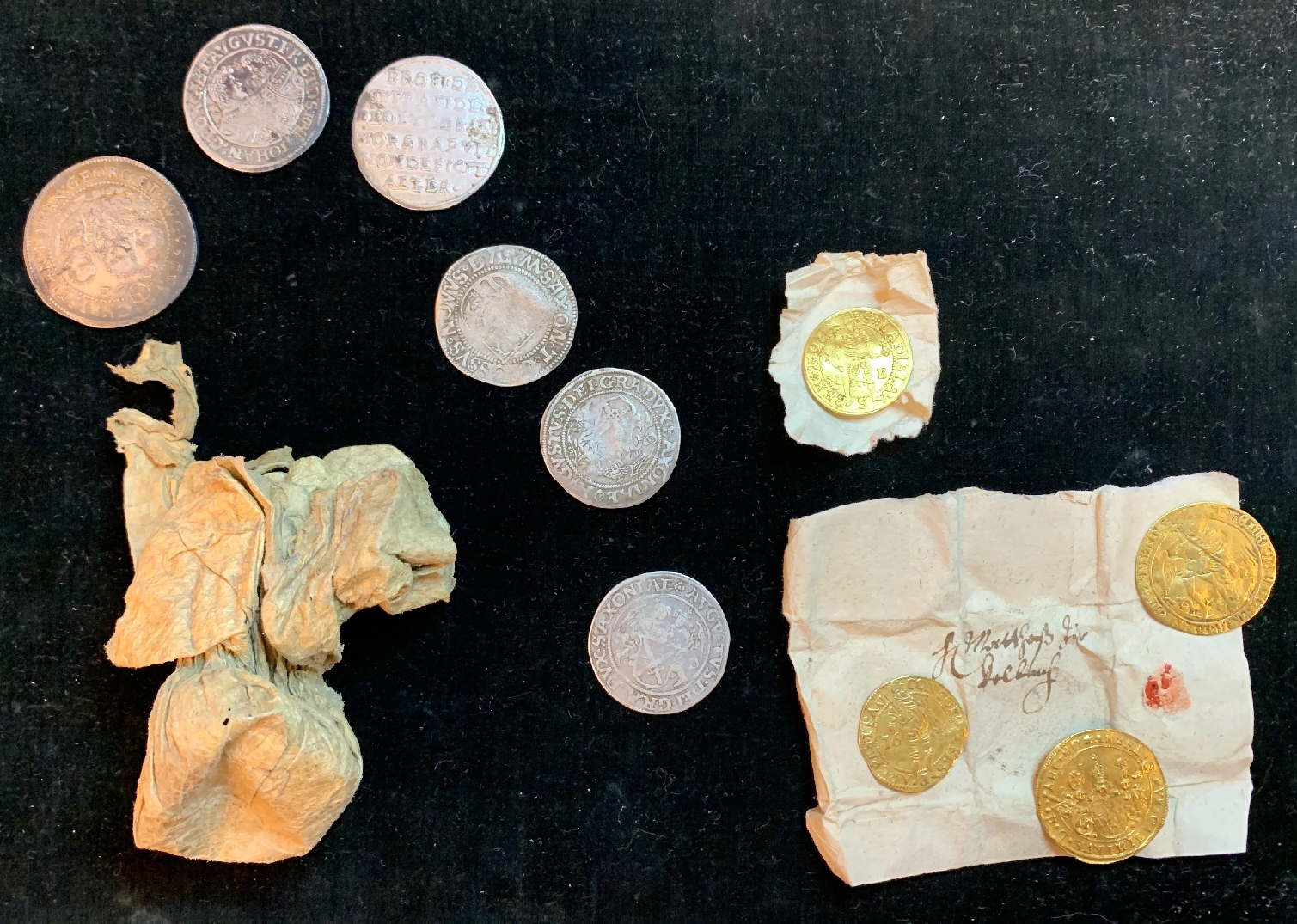
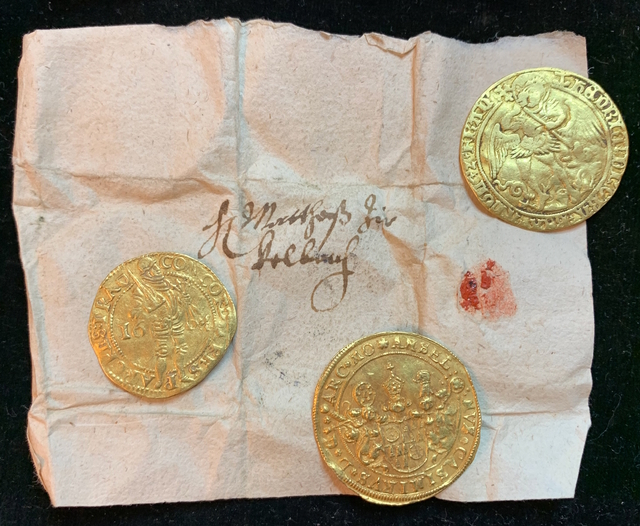
Eisleben, once the capital of the Mansfeld County, played a pivotal role during the Reformation. The Mansfeld Counts, some of whom converted to Protestantism, used St. Andrew’s Church as a symbol of religious coexistence, holding Catholic masses in the mornings and Protestant services in the afternoons. Against this backdrop, the statue of Count Johann Albrecht von Mansfeld-Arnstein (1522–1586) and his wife, Countess Magdalena, stands as a tribute to this historical era.
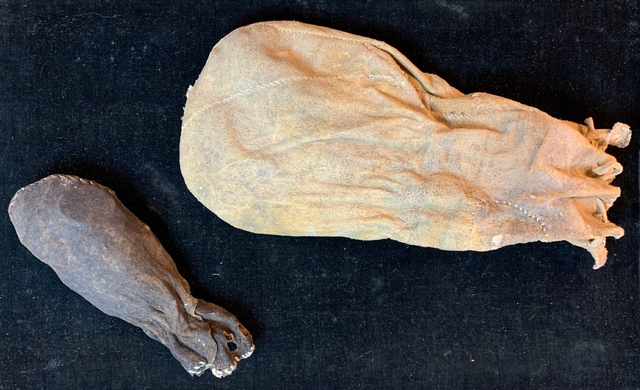
Video
Uncover the eerie tale of the terrifying curse of St. Andrews Church – watch the video to explore the chilling mystery behind it!
A Treasure Hidden in Plain Sight
The discovery of the hidden coins was nothing short of extraordinary. Restorers working on the sandstone statue—a high-relief depiction of the Mansfeld count and countess kneeling at the foot of the cross—found a cavity in the count’s leg. Inside, they uncovered four leather pouches containing a mix of gold and silver coins, including gold ducats, double ducats, silver thalers, half-thalers, quarter-thalers, and hundreds of pennies. The most valuable coin, a “golden angel,” was wrapped in paper, suggesting its importance to the church treasury.
Experts believe the treasure was hidden around 1640, during the Thirty Years’ War, a period marked by widespread conflict and devastation across Europe. As Swedish soldiers frequently plundered the region, it is likely that the coins were concealed to protect them from being looted. The fact that the hoard remained undisturbed for nearly 400 years is a testament to the meticulousness of its concealment.
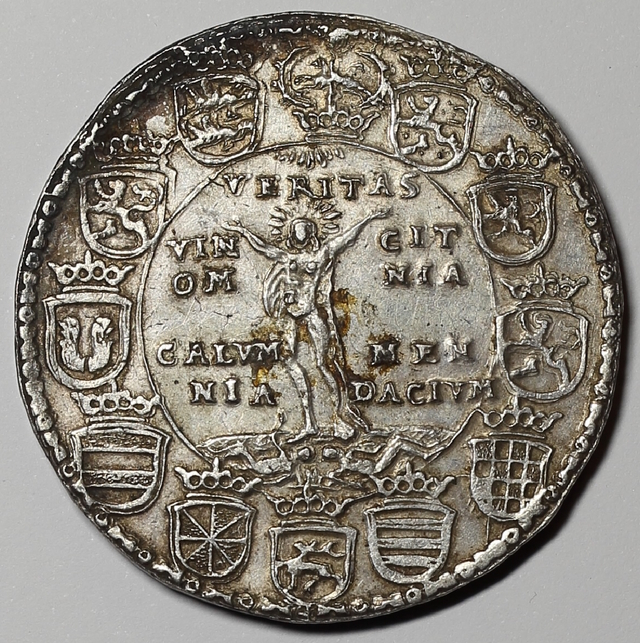
The Economic Context of the Hoard
The 816 coins represent a significant fortune in the 17th century. At the time, a successful miner in the region earned approximately one thaler, or 24 pennies, per week. To put this into perspective, the hoard contained several gold coins worth far more than a year’s salary for the average craftsman. Even everyday items like butter and herring, which cost a few pennies, highlight the immense value of the treasure.
Interestingly, the labels on some of the coins suggest they were part of the “Aerarium Pastorale,” a parish fund established in 1561. This fund served as a form of social insurance for pastors, providing pensions, healthcare, and theological education. The coins may have been collected through fees for special church services such as weddings, baptisms, and funerals, as well as “chair fees” paid by congregants for prominent seating during services.
The Thirty Years’ War and Its Impact
The Thirty Years’ War (1618–1648) was one of the most destructive conflicts in European history, ravaging regions like Saxony-Anhalt, where Eisleben is located. The war began as a struggle between Catholic and Protestant states within the Holy Roman Empire but quickly expanded into a broader political and territorial conflict involving multiple European powers. For the residents of Eisleben, the war brought untold suffering. Swedish occupying forces demanded food, shelter, and monetary payments from the local population, leaving many impoverished. By the war’s end, Eisleben had lost nearly half its population to violence, famine, and disease.
The hidden treasure offers a tangible connection to this era of hardship. The decision to conceal such a large sum of money reflects the desperate measures taken to safeguard assets during a time of chaos and uncertainty.
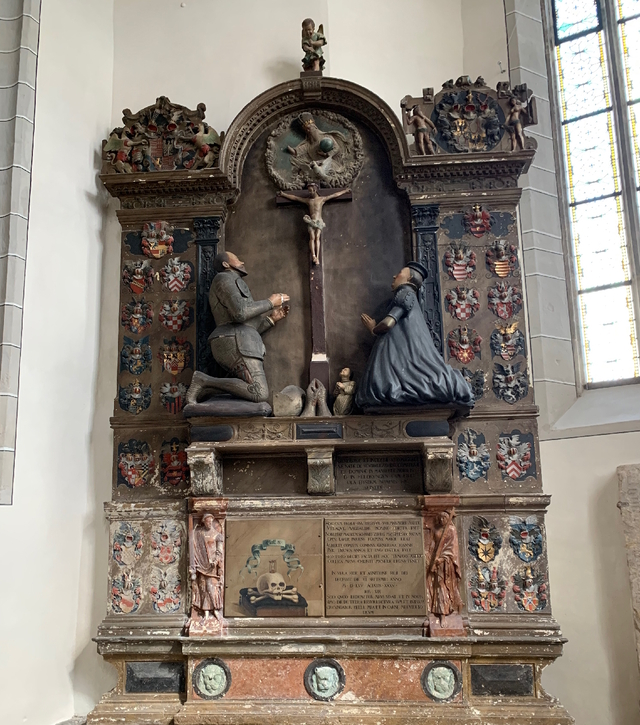
Preserving the Treasure and Its Legacy
Following the discovery of the hoard, researchers have embarked on a meticulous process to catalog and preserve the coins. Each coin is being studied individually to determine its origin, value, and historical context. The treasure will eventually be displayed at the Moritzburg Art Museum in Halle, providing the public with an opportunity to explore this fascinating chapter of history. Additionally, the coins will be showcased at St. Andrew’s Church, ensuring they remain connected to their original setting.
The Lutheran parish association in Eisleben has played a crucial role in facilitating this research, lending the coins to the museum and supporting efforts to uncover their story. This collaboration highlights the importance of preserving cultural heritage and using historical discoveries to educate and inspire future generations.
Conclusion
The discovery of 816 coins hidden inside the statue at St. Andrew’s Church is more than just a tale of buried treasure—it is a window into the past. It sheds light on the economic practices, religious customs, and societal challenges of 17th-century Germany, particularly during the Thirty Years’ War. As researchers continue to study the hoard, they uncover not only the monetary value of the coins but also the human stories they represent. In a church steeped in history, where Martin Luther once preached, this hidden fortune serves as a powerful reminder of resilience and the enduring legacy of those who came before us.
